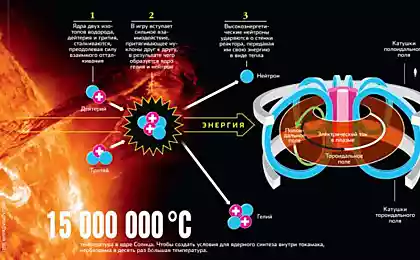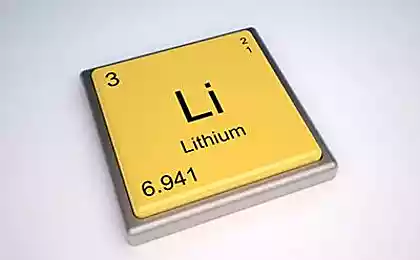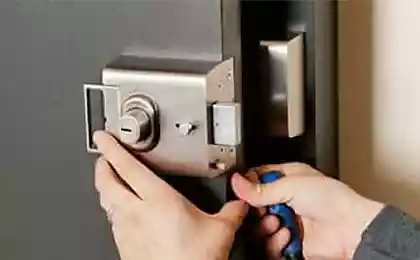1395
The discovery of helium
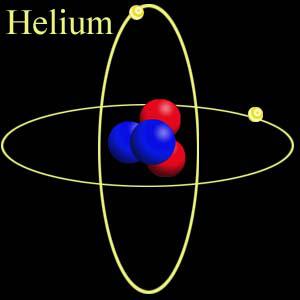
The main elements of the Mendeleev periodic system was discovered in the XIX and XX century. This is due to the fact that the majority of them in a natural form is extremely rare, and to find them (or get), you need a certain level of technological development. Each element has its own history of discovery. Perhaps the most instructive - helium, because until the late 1930s, scientists could not conclusively disprove the assumption that somewhere in the universe there may be chemical elements that do not exist on Earth. If it were true, would be called into question one of the basic principles of modern science, according to which all we know at the moment the laws of nature have acted and will act always and at all points of the universe (this is the Copernican principle).
A key role in the history of the discovery of helium played Norman Lockyer, the founder of one of the world's foremost scientific publications - journal Nature. In preparation for the release of the magazine, he met with the London scientific establishment, and became interested in astronomy. It was a time when, inspired by the discovery of the Bunsen-Kirchhoff, astronomers began to study the spectrum of light emitted by stars. Lockyer himself managed to make a number of important discoveries - in particular, it is the first to show that sunspots are cooler than the rest of the solar surface, and the first to point out the presence of the Sun of the outer shell, calling it the chromosphere. In 1868, exploring the light emitted by atoms in prominences - huge plasma emission from the surface of the Sun - Lockyer noticed several previously unknown spectral lines (see. Spectroscopy). Attempts to get the same line in the lab have failed, from which Lockyer concluded that he had discovered a new chemical element. Lockyer named it helium, from the Greek helios - «The Sun».
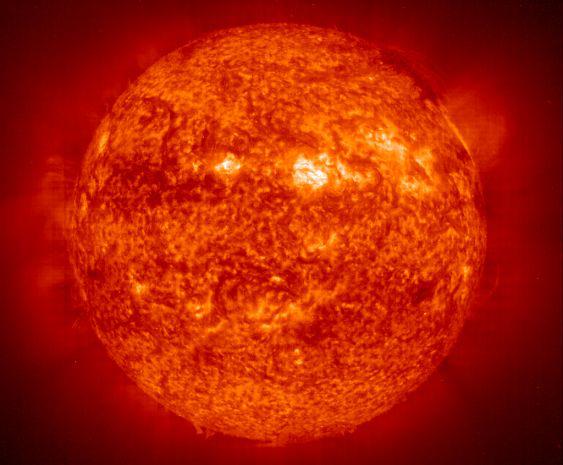
Scientists have wondered how to treat the appearance of helium. Some suggested that the interpretation of the spectra of prominences was a mistake, but this viewpoint is less supporters, as a growing number of astronomers were able to observe the line Lockyer. Others have argued that on the Sun there are elements that do not exist in the world - which, as already mentioned, contrary to the main provisions of the laws of nature. Still others (they were a minority) felt that someday He will be found on Earth.
At the end of 1890 Lord Rayleigh and Sir William Ramsay conducted a series of experiments that led to the discovery of argon. Ramsay remade his installation to use it to explore the gases given off by uranium-bearing minerals. The spectrum of these gases Ramsay discovered unidentified lines and several colleagues sent samples for analysis. After receiving a sample, Lockyer immediately recognized the line that more than a quarter century ago, he watched in the sunlight. The mystery was solved by helium gas, of course, is to the sun, but it also exists here on Earth. In our time, this gas is best known in everyday life as a gas to inflate the balloons and airships (see. Graham's Law), and science - thanks to its use in cryogenics technology to achieve ultra-low temperatures.

Over time, many experiments it was found that in our atmosphere contains helium. But the amount is so small that 247,350 cubic meters of air accounts for only one cubic meter of helium!
As a result of other experiments, it was determined that the helium released from the radium, and that the allocation of the various particles are formed so-called "alpha particle" - helium atoms having greater speed.
Helium gas was very useful. It is very lightweight and has a large lift. Since it is not flammable, it is very advantageous to use dirizhablinh, both military and civilian, in weather balloons, etc.
Realizing the importance of helium, the US government was engaged in the search for natural sources of helium. In some areas of the US, such as in the states of Texas, New Mexico and Kansas, to produce natural gas. It was found that this gas contains 1-2% helium.
Since there were no other sources for the production of helium, the United States is the only country in the world that has enough helium! Initially, the cost of one cubic meter of gas was 70 000 dollars.
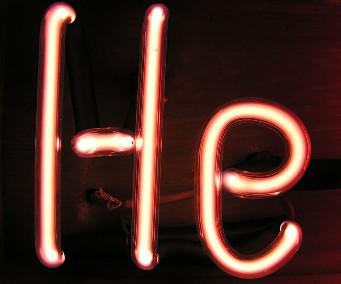
Helium is used to create an inert and protective atmosphere in welding, cutting and metal smelting, while pumping rocket fuel to fill airships and balloons, helium as a component of the medium lasers. Liquid helium is the coldest liquid on Earth - a unique refrigerant in experimental physics, which allows use of ultra-low temperature research (for example, in the study of electrical superconductivity). Because helium is very poorly soluble in blood, it is used as a component of artificial air supplied for breathing divers. Substitution of nitrogen (N) to prevent decompression sickness helium (by inhalation conventional air pressurized nitrogen dissolved in the blood, and then released from it in the form of bubbles occluding the small vessels).















